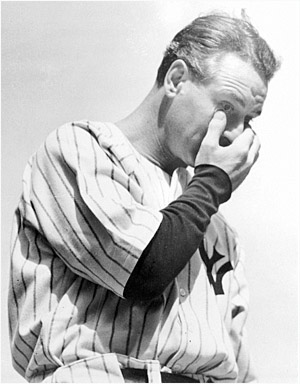
On Friday we discussed when it is appropriate for a man to cry. In short, a man should only cry when something truly significant happens. The less frequently something occurs, the more weight given it. Thus the rarity of male tears lends to them true potency. When a man sheds tears, particularly in the public eye, people sit up and take notice. We know something truly consequential is occurring.
For the purposes of this post, a “man cry” is defined as anything ranging from being choked up to an out and out sob. Now without further ado, the Art of Manliness presents the 15 greatest man cries in modern history:
Walter Cronkite-November 22, 1963
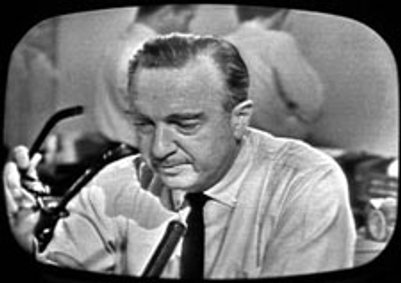
Cronkite, the famous anchorman for CBS, had a reputation for being cool and composed. But he is perhaps best remembered for the moment he lost a bit of that composure and captured a nation’s heartbreak. On Nov. 22, 1963, Cronkite interrupted “As the World Turns” to break the news that President John F. Kennedy had been shot. At this point, the media was unaware if the wounds had been fatal and Cronkite began what he called “the running battle between my emotions and my news sense.” At 2:38 the news came in that Kennedy had died. After making the announcement on air, Cronkite valiantly tried to keep from crying. He swallowed hard as his eyes grew moist and his voiced filled with emotion. Recalling that fateful day several decades later, he said, “I choked up, I really had a little trouble…my eyes got a little wet…[what Kennedy had represented] was just all lost to us. Fortunately, I grabbed hold before I was actually [crying].”
Dwight D. Eisenhower-June 5, 1944
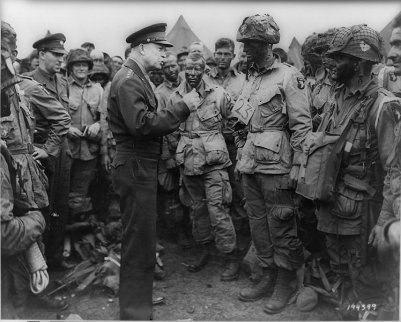
In the hours before D-Day was to begin, Dwight D. Eisenhower, Supreme Commander of the Allied Forces, visited with the paratroopers of the 101st Airborne Division to bolster their morale. As he moved amongst the troops, Eisenhower’s heart was heavy; he knew a 70% casualty rate was possible for the men standing before him. At 11:00 pm, Eisenhower stood on the roof of the nearby headquarters and saluted each plane as it took off en route to France. As these brave men soared past him, tears filled Eisenhower’s eyes. “I’ve done all I can,” he had told them. “Now it is up to you.”
Cal Ripken-Sept. 6, 1995
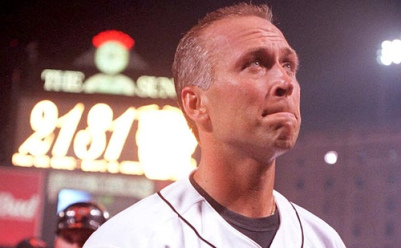
Despite Tom Hanks impassioned argument that there is no crying in baseball, many a player has broken down from time to time. Cal Ripken’s moment in the tearful spotlight came the night he broke Lou Gehrig’s record for consecutive game starts. Baseball’s own Iron Man surpassed the 2,130 record during a game between the Orioles and the Angels. When the new record became official in the fifth inning, 50,000 fans erupted into a standing ovation that lasted 22 minutes. While such a reaction might make any man weep, Ripken soaked it all in while remaining merely misty-eyed.
Anderson Cooper-September 3, 2005
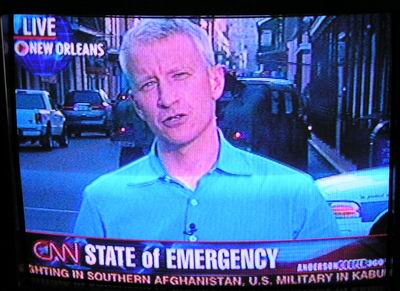
While news anchors have traditionally been known for stoically reporting the facts, Anderson has become the poster boy for a more emotive style of covering the news. Cooper cut short his vacation in Croatia to be in New Orleans as Hurricane Katrina hit. Cut off from his producers for several days, Copper made his way through the city, taking in the death and destruction. On the fourth day of coverage, Cooper berated Louisiana Senator Mary Landrieu for her glib answers to his questions. He then started talking to a group of desperate-looking evacuees, one of which was holding an American flag. Cooper’s emotions, which he had been bubbling at the surface for days, spilled over and tears ran down his face as the camera rolled. While not every one is a fan of his “emo-anchor” style, Cooper gets points for being himself and showing some genuine humanity.
Andre Agassi-September 3, 2006
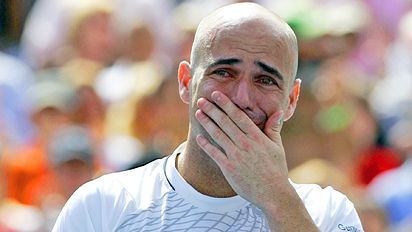
Suffering from intense pain in his back that required the anti-inflammatory injections after every match, Andre Agassi announced that his appearance in the 2006 US Open would be his last professional event before retiring from the game he loved. Agassi’s stunning career came to an end when he fell to 112th ranked Benjamin Becker in the third round. The crowd gave Agassi a four minute standing ovation. Tears poured from Agassi’s eyes as he addressed his fans. “The scoreboard said I lost today, but what the scoreboard doesn’t say is what it is I’ve found.”
George Washington-April 30, 1789
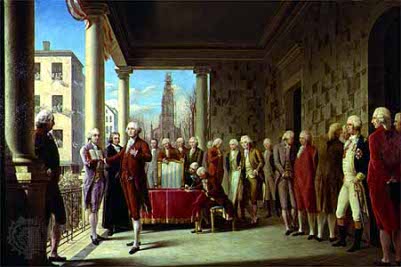
On April 16, 1789 George Washington began the journey from his beloved Mount Vernon home to the nation’s capitol, New York City. All along the route, in every hamlet and city along the way, freshly made Americans flocked to wave and salute the man who had led them through the country’s War of Independence and who would now lead it into the future. Citizens similarly lined the streets of New York City as Washington made his way to Federal Hall on Wall Street to finally take the oath of office. As Washington stood on the balcony of that building, the enormous crowd watched the momentous occasion. Chancellor Robert B. Livingston solemnly pronounced the oath, the Bible was raised, and the President bowed to kiss it. “I swear,” he declared. With eyes closed, he then fervently added, “So help me God!” Then the Chancellor said, “It is done,” turned to the crowd and loudly exclaimed, “Long live George Washington, President of the United States!” The crowd erupted in praise and applause. The new President bowed again and again, and had to stop to wipe tears from his eyes.
Lou Gehrig-July 4, 1939

It seemed as if the luminous career of Lou Gehrig would go on forever. The Yankee’s first baseman and prodigious slugger, was nicknamed the Iron Horse for his durability and commitment to the game. Sadly, his record for suiting up for 2,130 consecutive games came to an end when at age 36 Gehrig was stricken with the crippling disease that now bears his name. On July 4, 1939, the Yankees held a ceremony to honor their teammate and friend. They retired Gehrig’s number, spoke of his greatness, and presented him with various gifts, plaques, and trophies. Finally, Gehrig addressed the crowd and said, “Fans, for the past two weeks you have been reading about the bad break I got. Yet today I consider myself the luckiest man on the face of the earth.” The crowd gave Lou a standing ovation and Gehrig cried some of the manliest tears ever to have been shed.
Edmund S. Muskie-March 4, 1972
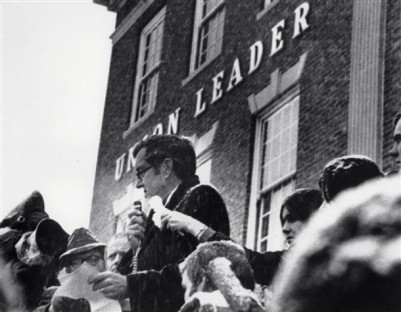
Heading into the New Hampshire primary, Senator Edmund S. Muskie was considered the front runner for the Democratic presidential nomination. Publisher William Loeb had been printing editorial attacks on Muskie in Manchester’s Union Leader newspaper, one of which impugned the character of Muskie’s wife. The paper also printed what became known as the “Canuck Letter” which accused Muskie of a bias toward Americans of French-Canadian descent. Muskie called a press conference to respond to the attacks. As he vehemently defended his wife, Muskie’s speech broke three times as he rubbed his face and tried to regain his composure. Pictures of his anguished expression were splashed about in the media. Muskie claimed that he never cried and that the multitude of “tears” on his face were from melting snow. Regardless, voters found his emotional outburst off-putting, and Muskie’s political fortunes never recovered; he eventually lost the nomination to George McGovern. Later it was revealed that Muskie was almost certainly a victim of one of Nixon’s “dirty tricks.” The Canuck Letter turned out to be a fabrication written by a Nixon staff member intent on discrediting a man who had put the president’s reelection in jeopardy.
Jon Stewart-September 20, 2001
After 9/11, many newscasters and media personalities had an understandably difficult time keeping their composure, and comedy programs faced the additional challenge of continuing on during such a somber time. As media personalities remarked on the devastation and shock of that day, many revealed a very human side of themselves. Few such commentaries came off as authentic and heartfelt as John Stewart’s on the day the Daily Show recommenced. Watching his remarks now, one can vividly remember the way 9/11 felt like a horrendous punch in the gut. Deeply affected and choking up many times throughout his remarks , Stewart came off as a class act and as a man who truly loves his country.
Dick Vermeil-1999
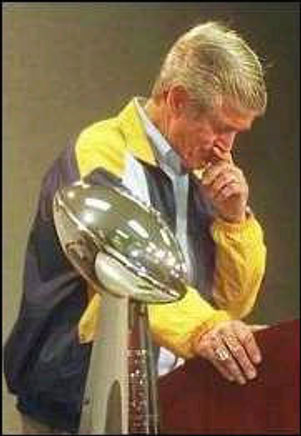
Dick Vermeil was a football coach known for wearing his heart on his sleeve. He cried all the time: at press conferences, during speeches, when he cut a player, when he traded a player, when his team lost, when his team won. Yet his crying was never born of selfishness or a woe is me attitude. He cried because he loved the game and he loved his players. “If you don’t invest very much, then defeat doesn’t hurt very much and winning is not very exciting,” Vermeil once said. One of his finest cries came after Ram’s quarterback Trent Green was injured. Vermeil had ended a 14 year retirement to return and coach the Rams. Their first two seasons had been an embarrassing wash. And things seemed to take a turn for the worse when Green was sidelined at the beginning of the 99′ season. Yet Vermeil didn’t cry for himself and the heat his career would continue to face; he cried for Green, knowing how hard the man had worked and how badly it would feel to have it taken away. Vermeil next cried when his back-up quarterback, the then unknown Kurt Warner, won his first game as a starter. Vermeil’s eyes seldom remained dry that season, as the Rams went on to win the Super Bowl.
Abraham Lincoln-June 3, 1861
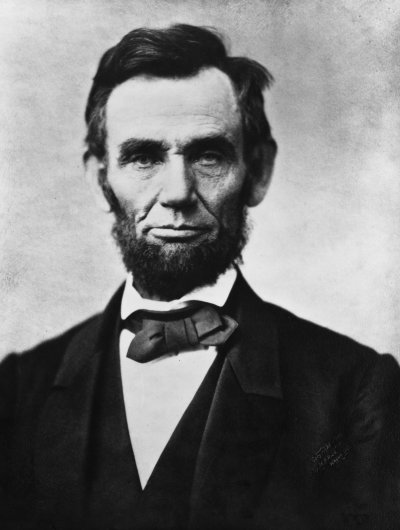
Lincoln was a profoundly melancholy guy. And few other men have had as many reasons to weep. Lincoln wept often; even the occasion of first hearing “The Battle Hymn of the Republic” was enough to make him sob. One of his manliest cries, however, was when he wept over his longtime rival’s death. Stephen A. Douglas had been Lincoln’s rival for the Senate in 1858 and his opponent in their famous debates. Lincoln lost to Douglas in that election. But the two men found themselves squaring off again in the 1860 presidential election, and this time, Lincoln bested his opponent. Despite their differences, the two competitors did have common ground; Douglas vigorously supported Lincoln’s use of military action to oppose Southern secession. Douglas set off on a non-stop series of speaking engagements in the South, urging the secessionists to rejoin the Union. Exhausted, Douglas contracted typhoid fever and died June 3, 1861. When Lincoln heard the news of Douglas’ death, he openly and unabashedly wept. Though the men had been rivals, Lincoln had once called Douglas “his best friend in the world.” If only all politics could be conducted with such civility and respect.
David Letterman-September 17, 2001
David Letterman was the first TV comedian to return his show to air after 9/11, and like Stewart, he put aside the usual yuks and chose to begin the Late Show with a heartfelt speech about the recent events. Letterman described the somber mood in the city, praised Giuliani’s leadership, and celebrated the courage of New York City’s fire and policemen. He then pointed to the example of a small, struggling, agricultural town in Montana as symbolic of the American spirit. As he related how the townspeople had crowded into the high school’s auditorium to hold a rally to raise money for New York City, Letterman got mighty choked up.
Tiger Woods-July 23, 2006

Earl Woods was more than just a father to his son Tiger. He was Tiger’s mentor, best friend, and inspiration. Earl introduced golf to his son while he was just a baby; as Tiger sat in a high chair, Earl showed him how to swing a golf club. On May 3, 2006, Earl passed away from prostate cancer. When Tiger returned to golf after mourning his father’s death, his game was rusty and he missed the cut for the US Open. But he soon recovered his strength and focus and triumphantly won the Open Championship, an event he had dedicated to his dad. After sinking his final putt, Tiger sobbed on his caddie’s shoulder, thinking of the man who had gotten him to the point of being the greatest golfer in the world.
Brett Favre-March 4, 2008
After 16 seasons and 442 touchdown passes, legendary Green Bay Packer Brett Favre decided it was time to hang up his cleats. It’s never easy for athletes to walk away from the sport they love; for Brett Favre, it was positively heartbreaking. At the press conference to announce his retirement, Favre struggled mightily to keep his composure but ended up weeping as he praised his fans and teammates and spoke of his love for the game. “I’ve given everything I could possibly give to this organization, to the game of football, and I don’t think I have anything left to give.”
Ulysses S. Grant-April 15, 1865
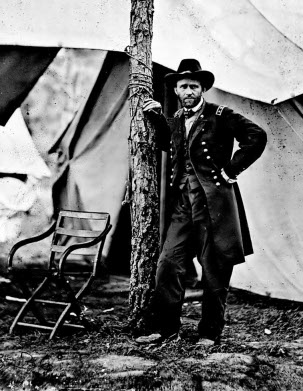
On April 9, 1865 General Lee surrendered at Appomattox. The Civil War had reached its conclusion and General Ulysses S. Grant could finally celebrate after years of tremendous bloodshed and incredible stress. The celebration did not last long; however, less than a week later, word reached Grant that Lincoln had been assassinated. Grant wept when he received the news. Lincoln had been Grant’s friend and champion. When the public had cried for Grant’s head after the bloodbath at Shiloh, Lincoln had replied, “I can’t spare this man. He fights.” He was, said Grant, “Incontestably the greatest man I ever knew.”
Dishonorable Mentions
Iron Eyes Cody
Iron Eyes Cody, who claimed to be of Cherokee/Cree descent, was frequently cast in Westerns and worked as an ardent supporter of Native American causes. But his most memorable role came in the 1971 “Keep America Beautiful” public service ad. At the end of this anti-pollution commercial, a callous motorist flings a bag of trash at Cody’s feet. A tear rolls down the Indian’s worn cheek. The image became iconic; not only had whites taken the Indians’ land, they had also made a heaping mess out of it! The only problem? Iron Eyes Cody was no Indian; he was a second generation Italian who had for decades passed himself off as the real deal. And the tear wasn’t authentic either; it was glycerin.
Tom Coburn-September 14, 2005
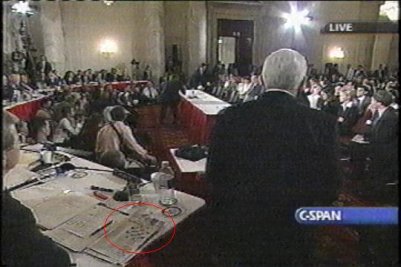
During the confirmation hearings for Supreme Court Justice nominee John Roberts, Tom Coburn, Republican Senator from Oklahoma, choked back tears over what he felt was the divisively partisan nature of the proceedings. Filled with emotion, Coburn said, “When I ponder our country . . . my heart aches for less divisiveness, less polarization, less fingerpointing, less bitterness, less mindless partisanship.” Bitter partisanship is certainly something that makes every man want to shed a tear, but coming from the man who fought against a resolution honoring Rachel Carson on her 100th birthday, argued that “Lesbianism is so rampant in some of the schools in Southeast Oklahoma that they’ll only let one girl go to the bathroom,” advocated the death penalty for doctors who perform abortions, placed a hold on a bill protecting Whistleblowers from retaliation, and was actually doing a crossword puzzle before it was his turn to speak, the tears lack a certain amount of, um, credibility.
Jimmy Swaggart-February 21, 1988

In the 1980s, televangelist Jimmy Swaggart was riding high. “The Jimmy Swaggart Telecast” was broadcasted on 250 television stations and watched by over two million people. Wrapping himself in a cloak of righteousness, Swaggart called out fellow evangelists (and competitors) Marvin Gorman and James Bakker for their sexual infidelities. Unfortunately, Swaggart had failed to remove the beam from his own eye. Caught in a tryst with a prostitute, Swaggart confessed his indiscretion to a shocked congregation and television audience. As the tears streamed down his cheeks, Swaggart prayed, “I have sinned against you, my Lord, and I would ask that your precious blood would wash and cleanse every stain until it is in the seas of God’s forgiveness.” Apparently, Swaggart’s repentance was only skin deep; he was caught with another prostitute in 1991.
Bill Clinton
When Bill Clinton was president, he appointed Ron Brown to be his Secretary of Commerce. Brown’s tenure in the position was cut short when the plane he was flying in crashed in Croatia. When Clinton exited Brown’s funeral, he was seen laughing with his colleagues. But as soon as he spied a camera, his smile instantly turned into a frown and he pretended to wipe away tears.
Richard Nixon-September 23, 1952
In 1952, Richard Nixon was the Republican candidate for the vice presidency. But a scandal erupted which threatened to derail his campaign; Nixon was accused of taking $18,000 in illegal campaign contributions. This prompted Nixon to speak to the country in order to explain his innocence and the honesty of his finances. In what became known as the “Checkers Speech,” Nixon did admit to taking one unusual contribution-a Cocker Spaniel his daughters had named “Checkers.” Nixon choked up as he told the national audience, “the kids, like all kids, love the dog and I just want to say this right now, that regardless of what they say about it, we’re gonna keep it.” After concluding the speech, Nixon broke down and sobbed. “‘I was an utter flop,” he said, “Well, at least I won the dog vote tonight.”


